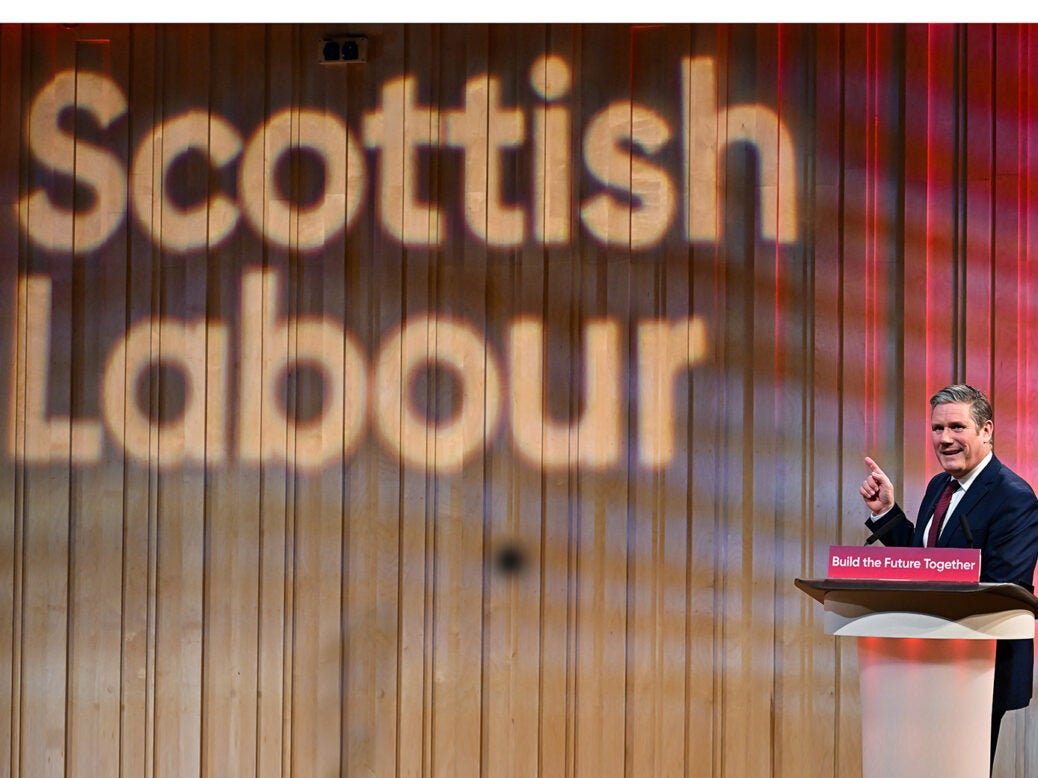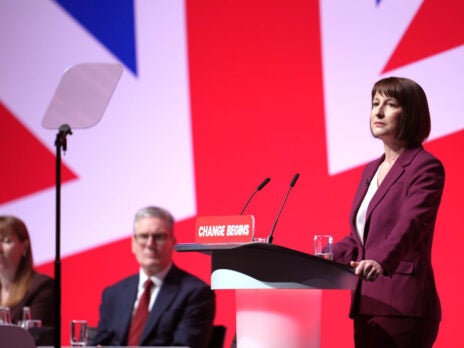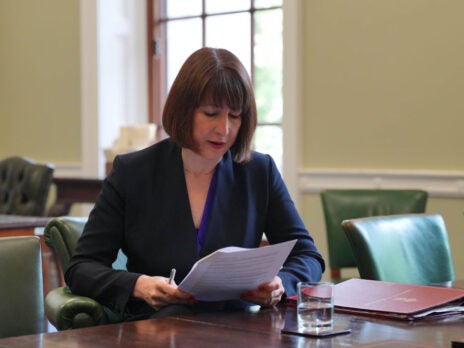
Labour’s spectacular advance in the polls since the Chancellor’s “fiscal event” a fortnight ago has raised the party’s hopes that it might be able to stage a recovery in Scotland and thereby end the SNP’s dominance of Scottish representation at Westminster. Three polls published this week to mark the SNP’s annual conference over the weekend in Aberdeen have certainly brought Labour plenty of encouraging news. However, they also underline the size of the challenge that the party still faces in Scotland.
All three polls confirm that much of the Britain-wide swing towards Labour has also occurred north of the border. On average the three polls put the party on 31 per cent, up 12 points on its Scottish vote share in 2019. Labour has not been as high as that in the polls since the 2014 Scottish independence referendum, after which the party suffered a calamitous decline (losing all but one of its 41 Scottish seats at the 2015 general election). Meanwhile, as elsewhere in Britain, Keir Starmer’s personal ratings have improved and are at a record level.
In the UK polls, the swing to Labour has, of course, taken away primarily from the Conservatives, reflecting an adverse voter reaction both to the mini-Budget and the financial market turbulence that followed in its wake. On average the Britain-wide polls now put the Conservatives on just 25 per cent, and the party consistently trails Labour on economic competence, while Truss’s personal ratings have plummeted to an even lower level than those for Boris Johnson.
Conservative support has fallen heavily in Scotland too. The latest polls give the party a tally of just 14 per cent, its worst position since the 2015 general election, while Truss’s personal popularity among Scots is no better than Johnson’s. If the latest poll figures were to be replicated at a general election, the Conservatives could find themselves without a single Scottish MP, just as they did after the 1997 election.
Even so, the swing from the Tories to Labour in these latest Scottish polls is not on the same scale as in recent Britain-wide polls. The 14 per cent tally for the Conservatives represents an 11-point fall on the party’s support since 2019 – little more than half the 20-point drop in the party’s support across Britain as a whole. Meanwhile, the 12-point increase in Labour support is markedly less than the 18-point advance (to 50 per cent) that the party is currently recording across the UK.
This reflects two crucial differences between politics north and south of the border. First, the Scottish Conservative Party is much less popular than its English counterpart and thus it has far fewer votes to lose. Second, the electoral scene is dominated by the SNP, and that dominance has been unaffected by the recent developments at Westminster.
On average, the three latest Scottish polls give the SNP 45 per cent of the vote – exactly in line with the nationalists’ tally in 2019 and little changed from previous polls taken earlier this year. There is little sign that the possibility of a Labour government at Westminster is persuading SNP supporters to change their loyalties. Meanwhile, Nicola Sturgeon’s personal popularity – still very much in positive territory – is undiminished too.
As a result, the prospects are still for no more than a modest increase in Labour’s Scottish representation at Westminster. Even in these latest polls, the party is still as much as 14 points behind the SNP. If the movement since 2019 recorded by the latest polls were to be replicated in each and every constituency, the party would find itself with just seven seats on the current boundaries, up six from 2019 but no more than what the party secured under Jeremy Corbyn’s leadership in 2017.
True, all six gains would come at the expense of the SNP, while anti-SNP tactical voting by some Conservative supporters might boost that tally a little more – though on these poll numbers there will not be many Tory votes left to squeeze. In the meantime, it is the SNP that would pick up the half dozen seats that the Conservatives are at risk of losing, leaving the nationalists’ Westminster representation undiminished.
To make serious inroads into the SNP’s dominance, Labour will likely have to reduce the nationalists’ lead down to ten points or less. But with the Conservatives already down to little more than their core vote, it is unlikely Labour can gain much more from them (nearly one in five of those who voted for the Scottish Conservatives in 2019 have already switched to Labour). Instead, the party is going to have to take voters from the SNP.
This will not be easy. The SNP’s electoral dominance is founded on the party’s ability to command the support of that half of the Scottish electorate (and the latest polls suggest that support for independence remains at around 49 per cent) that wishes to leave the UK. Three quarters of those who voted for independence in 2014 still back the SNP, while the figure for those who currently support it is even higher. Labour, by contrast, is still largely fishing in unionist waters. The key question that still faces the party in Scotland is what it can say to persuade independence supporters to switch their allegiance.
[See also: Most Labour voters want Keir Starmer to reverse Brexit]


